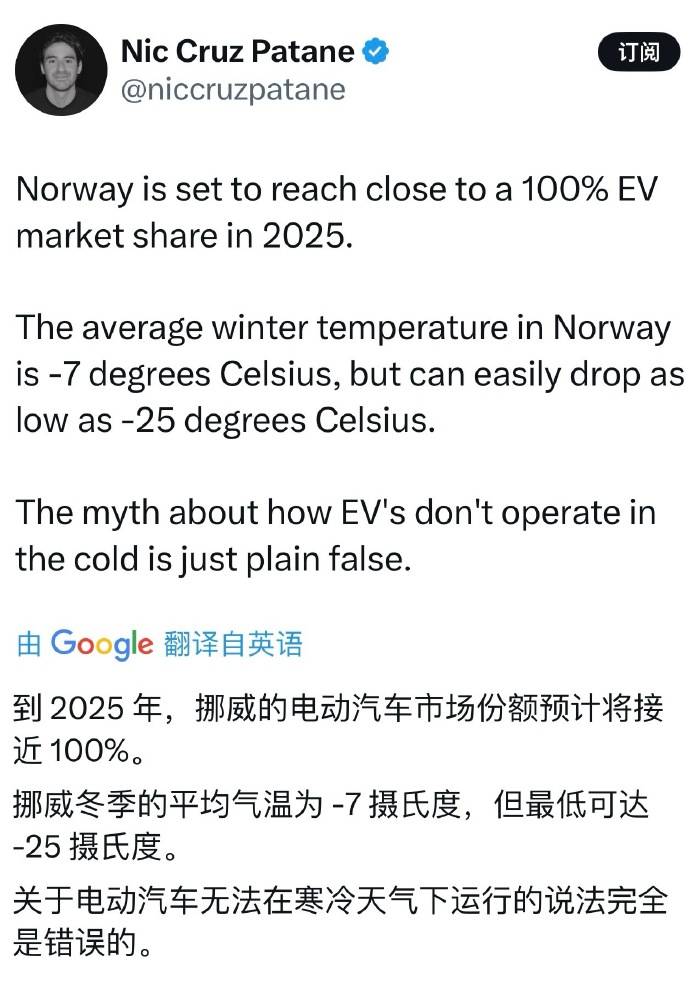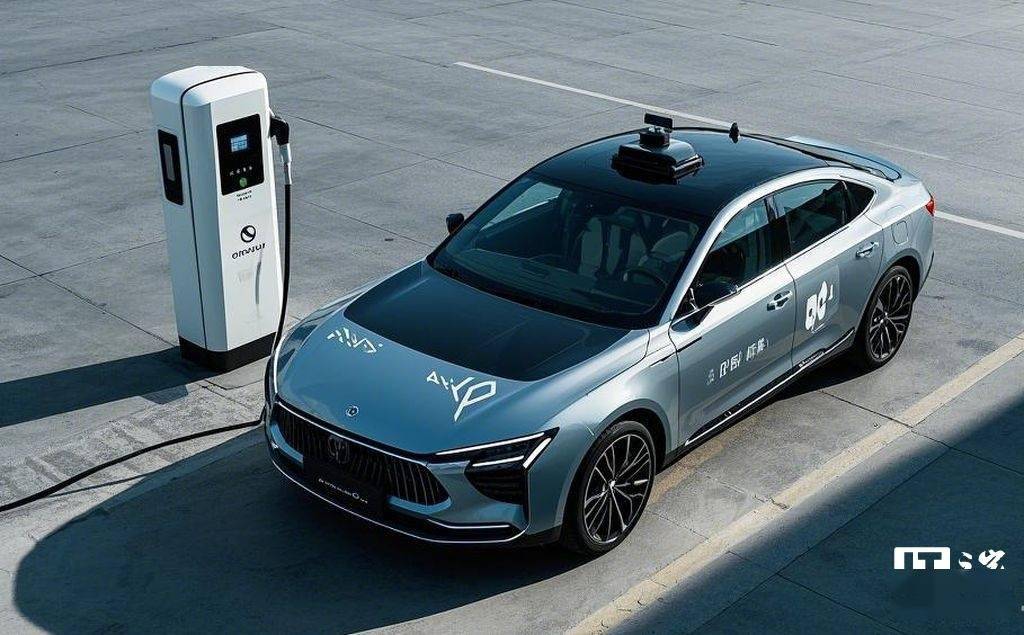In the flourishing global electric vehicle market, an indispensable phenomenon is that the performance of electric vehicles in cold climates has become a major concern for consumers. Particularly in areas with low winter temperatures, the range of electric vehicles often significantly decreases, a situation particularly evident outside of Northern Europe, leading to a relatively lower acceptance of electric vehicles in these regions.

However, recent reports indicate that Norway, a Northern European country, plans to achieve an electric vehicle sales share of 100% by 2025, meaning almost all newly sold vehicles in the country will be electric. This news has sparked widespread attention, especially in China, where Tesla China's Director, Tao Lin, cited this view via social media, emphasizing that even in cold places like Norway, electric vehicles can be widely used, implying that there is also great potential for electric vehicles in the Chinese market.

The Norwegian plan for electric vehicle adoption is indeed noteworthy, given that the country's winter temperatures can drop to -25 degrees Celsius, with a long winter season. However, directly applying this to China is not so straightforward. First, there are significant differences between the two countries in terms of geographical area and population density. Norway, a narrow country stretching from north to south, has a relatively small area, making the layout of charging facilities relatively easy. In contrast, China's vast territory presents more challenges for the construction and distribution of charging facilities.

Chinese consumer driving habits also differ from those in Norway. In China, long-distance travel during the Spring Festival, often the coldest time of the year, is a common occurrence for many families. For electric vehicle users, this means more frequent charging and the risk of queuing at charging stations or even being unable to continue their journey due to a lack of facilities. Therefore, in the Chinese market, the widespread adoption of electric vehicles requires more consideration of the improvement of charging facilities and changes in users' travel habits.

As for temperatures, although Norway is close to the Arctic Circle, its winter average temperature is not as extreme as one might imagine due to its maritime climate. In contrast, the northern regions of China, especially Inner Mongolia, can experience temperatures as low as -50 degrees Celsius during winter, presenting a greater challenge to the battery performance of electric vehicles. Therefore, for electric vehicles to fully replace internal combustion engines in the Chinese market, greater breakthroughs are needed in battery technology, charging facilities, and user acceptance.

While countries like Norway have made significant progress in electric vehicle adoption, this experience is not entirely applicable to the Chinese market. In China, the development of electric vehicles needs to overcome more challenges, including the improvement of charging facilities, battery technology, and changes in users' travel habits. However, with continuous technological advancement and market maturity, the widespread adoption of electric vehicles in China is just a matter of time.






暂无评论